Stronger together: the Manchester bee
- Paul Dobraszczyk
- Feb 24, 2018
- 5 min read
Updated: Jun 12, 2020
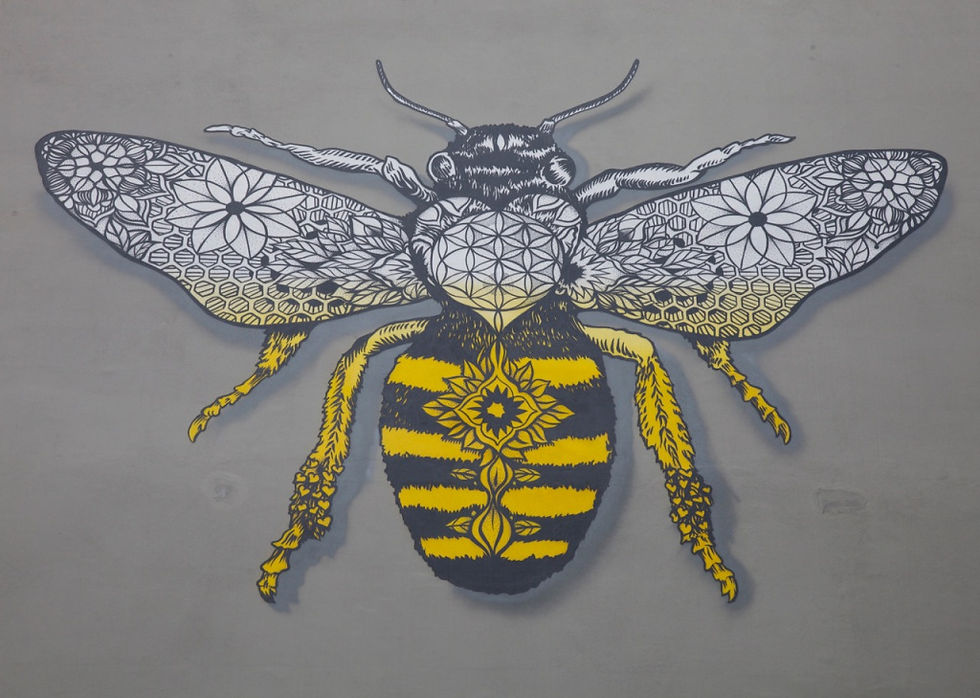
Bee mural painted by Peter Barber in September 2017, Warwick Street, Northern Quarter
For over 150 years, the bee has been a symbol of Manchester. The city’s coat of arms was given royal approval in 1842, even though Manchester didn’t officially become a city until 1853, and it included a globe covered with bees. These were not only an obvious symbol of industriousness, but also a reflection of the fact that, by the 1840s, Manchester had become the world’s pre-eminent industrial city, defined by its global domination of the cotton industry. From then on, bees became part of the image of the city and were incorporated into the floor mosaics of Manchester’s most important civic statement – the Town Hall, completed in 1877, as well as some of the buildings of the Cooperative movement, where bees are equated with an equitable form of industriousness, one that isn’t based on the exploitation of workers. Even as the city’s principal industry went into catastrophic decline after the Second World War, bees still featured in Manchester’s civic iconography, but reduced to a more prosaic role as labels for the city’s lampposts and rubbish bins.
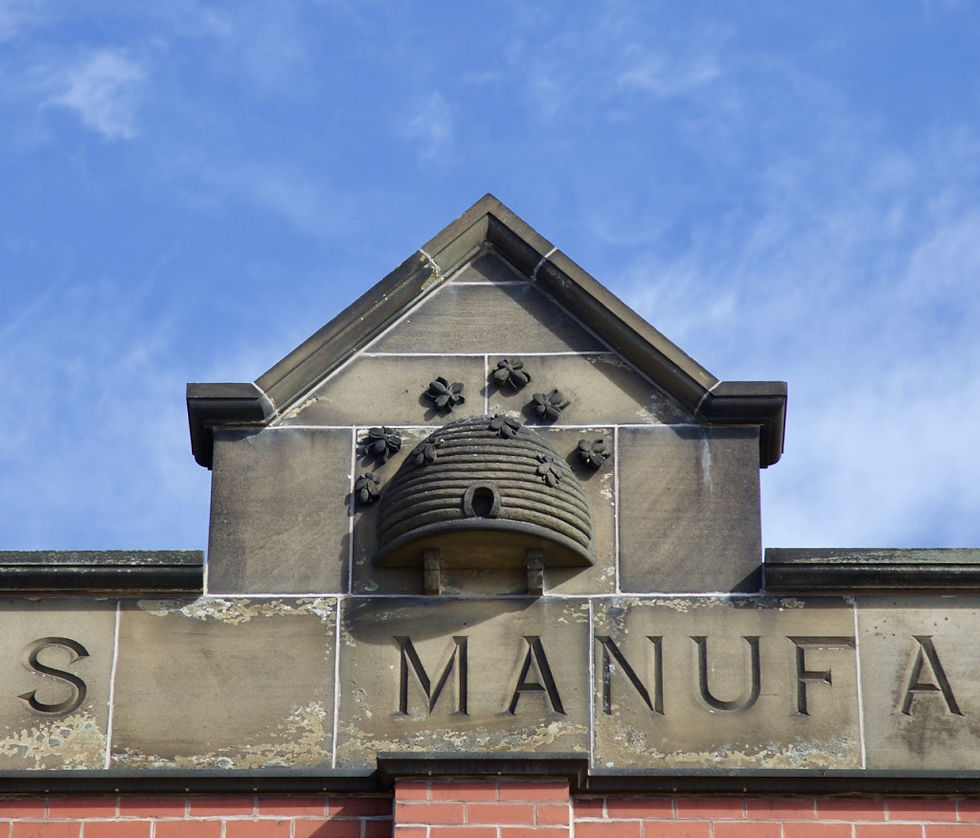
Bees on a co-operative building, Greenside Lane, Droylsden
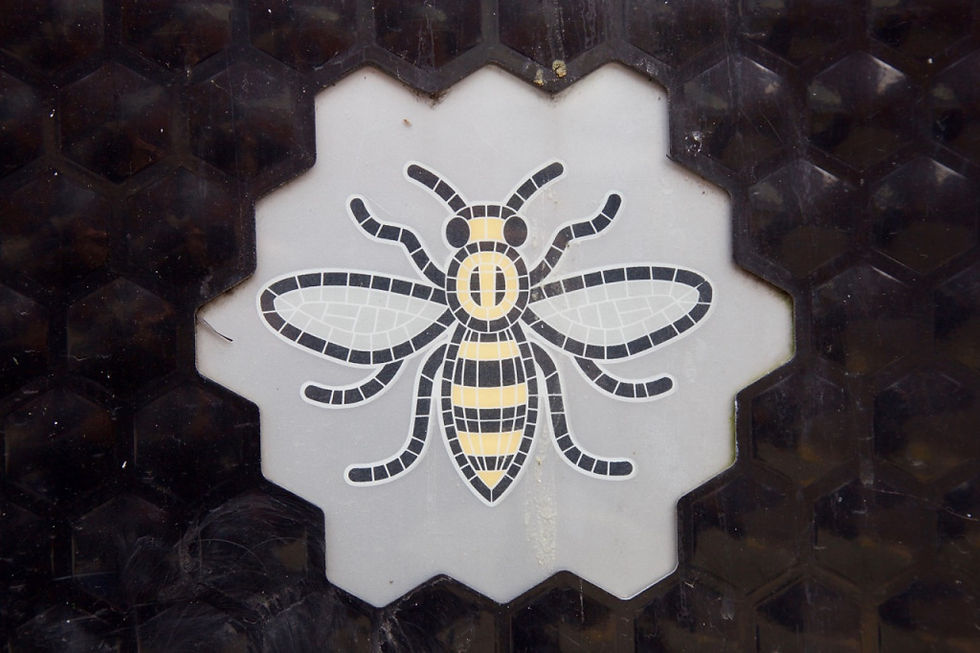
Rubbish bin label in Albert Square
The significance of the bee in the city was changed forever in the wake of the terrorist atrocity that was carried out just after an Ariana Grande concert ended at the Manchester Arena on 22 May 2017 – a suicide bomb attack that left 22 people dead and 64 injured. Many of the victims were children, the youngest being eight-year-old Saffie Rose Roussous. Hours after the attack, illustrator Dick Vincent posted a hastily-drawn image of a bee on Instagram, together with the caption ‘Stay strong our kid’, and, in the following days, bees appeared everywhere in the city. This equating of the bee with resilience chimed strongly with the defiant mood of the city. When a vigil was held for the victims on 23 May in Albert Square, the same design was seen surrounded by flowers at a memorial near the cenotaph.
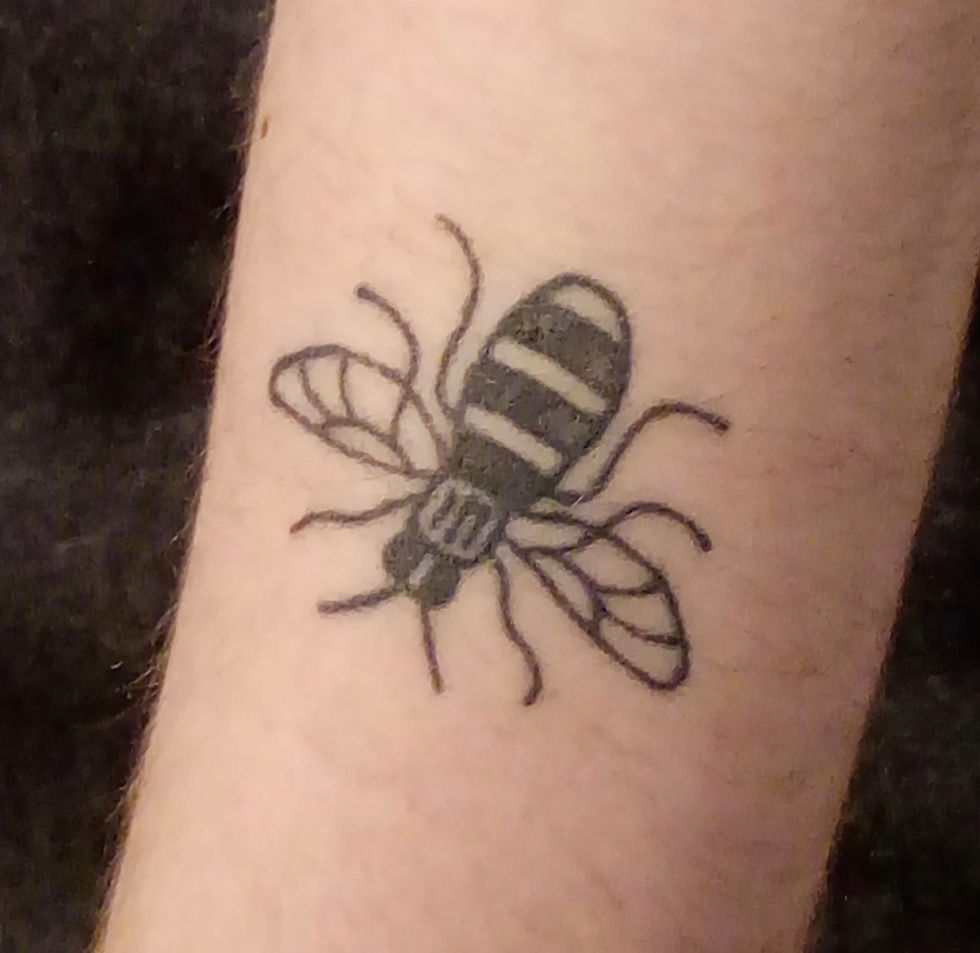
Bee tattoo photographed on the arm of a waiter in Teacup in the Northern Quarter
Bees also began appearing on the bodies of Manchester’s residents. After Stalybridge tattoo artist Sam Barber launched the Manchester Tattoo Appeal on 25 May, hundreds of people were seen queuing for bee tattoos – the proceeds donated to a fund for the victims of and families affected by the attack. As reported by the Manchester Evening News, people of all ages waited patiently for bee tattoos. They wanted to identify with those affected by the atrocity, not least the parents of one of the victims – 15-yr old Olivia Campbell – who both had the bee emblem tattooed on their hearts, together with Olivia’s name and birthdate.
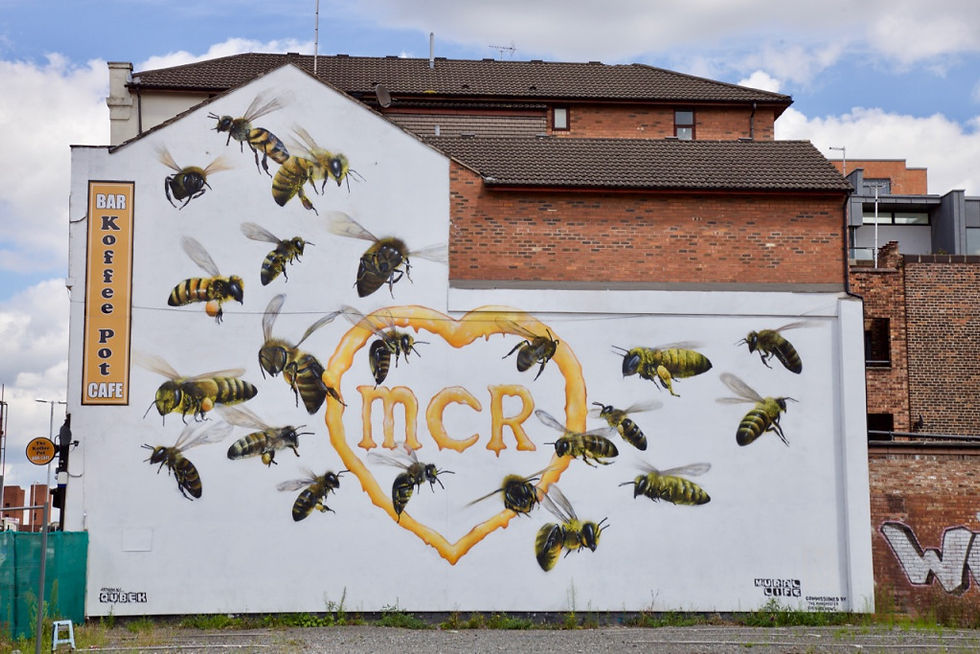
Bee mural painted by Qubek in June 2017 on the Koffee Pot cafe on Oldham Street
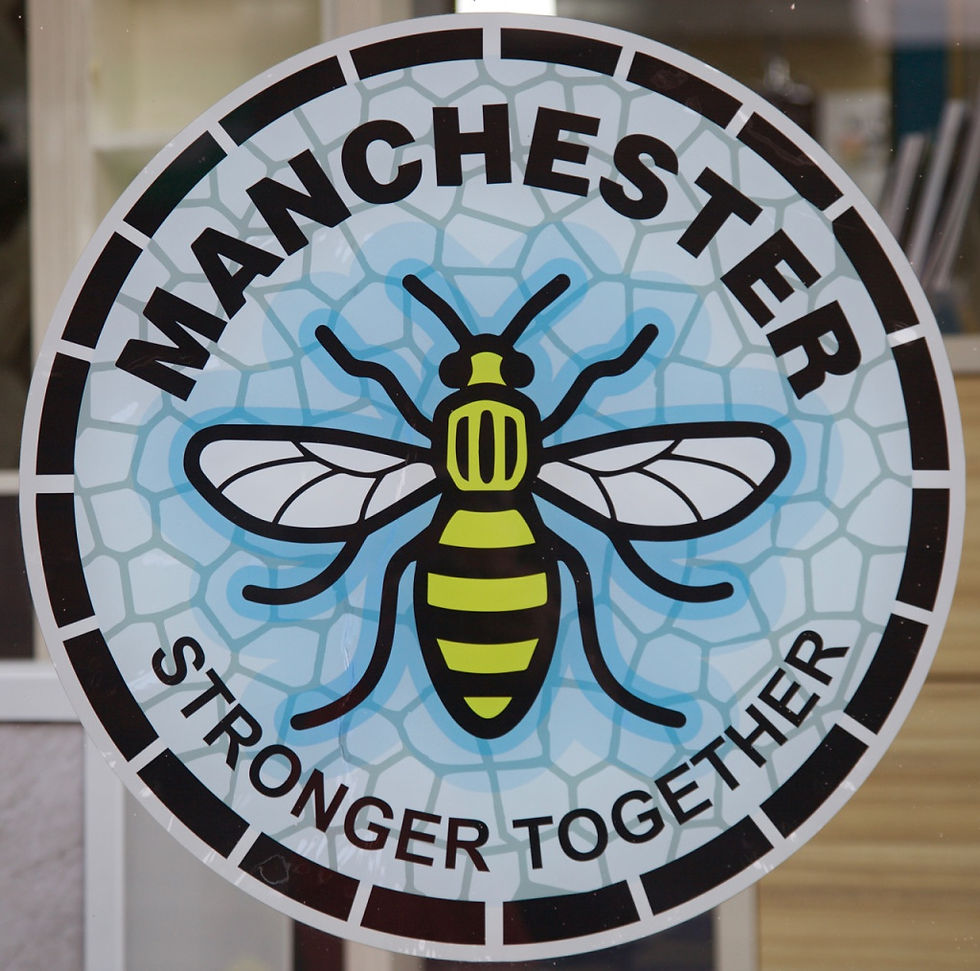
Bee window sticker in Stockport
Months on from the attack and bees have become one of the principal emblems of the city, often accompanied by messages of defiance, whether ‘we stand together’, ‘stronger together’, ‘unity is strength’ or ‘bee strong Manchester’. Window stickers have appeared in many premises, with bee badges and stickers now sitting alongside football shirts and postcards in the city’s souvenir shops. Some have stickers on their car bumpers or windows; others have bee trinkets, bee-emblazoned boxes, or even bee wallpaper. Perhaps most obvious are the dozens of bee murals that have been painted onto buildings in the city, particularly in the Northern Quarter, where street art defines the look and feel of this area. Foremost of these artists is Qubek – tag name of Russ Mehan – who painted a bee mural on the old public toilets in Stephenson Square two days after the attack. In early June, Qubek was commissioned by the Manchester Evening News to paint a large bee mural on the side of the Koffee Pot cafe on Oldham Street. Taking up an entire wall, this mural unequivocally equated the bee with the victims of the attack, each of its 22 bees representing one of those killed. Here, Manchester’s principal newspaper endorsed the bee as a symbol of ‘Manchester’s indomitable spirit’. Since then, Qubek has been overwhelmed with commissions to paint bees, whether civic projects that seek to draw diverse communities together, such as one he undertook in October 2017 with children attending Stanley Grove primary school in Longsight, or as emblems for businesses seeking to identify with this new collective spirit. Qubek has even been commissioned to paint large-scale bee murals on private homes in Chorlton and Offerton.
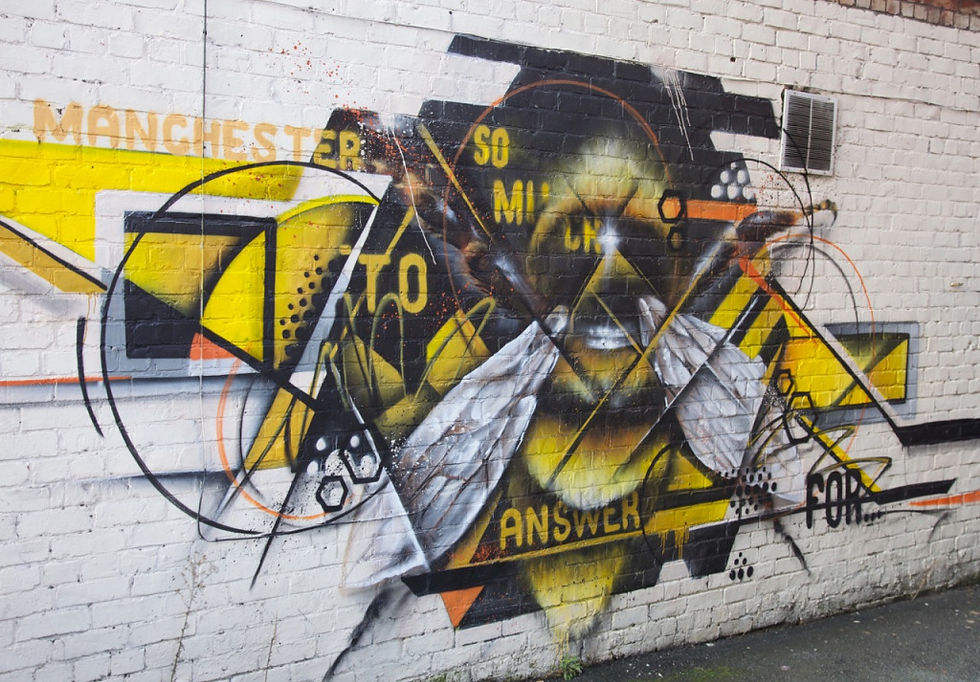
Bee mural painted by Qubek in 2016 on Aspin Lane, Angel Meadow
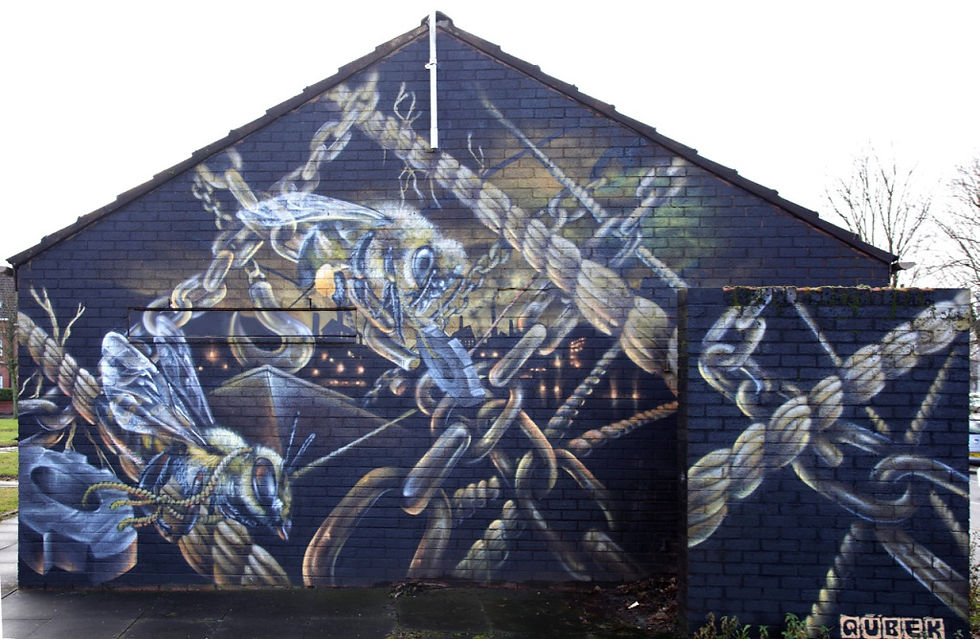
Bee mural painted by Qubek in August 2017 near the Southern Cemetery, Chorlton
This renewed sense of civic identity and unity is clearly a powerful response to a tragedy that was shocking in its brutality and senselessness; yet it risks turning the bee into something sacrosanct – an image that can only symbolise one thing. Qubek may have become the leading image-maker of bees in the wake of the terrorist attack, but he was actually using bees in very different ways previous to it. For instance, in October 2016, Qubek painted a bee on a hoarding advertising ‘luxury student apartments’ in Hulme, questioning how such accommodation could ever be afforded by most Mancunians. In May 2016, he painted an aggressive-looking bee on another hoarding in Back Piccadilly, together with the slogan ‘Save our banks; kill our poor!’. He also painted a cubist-style bee mural in 2016 near the Cooperative building in Angel Square, with the slogan ‘so much to answer for’, a reference to The Smiths 1984 song Suffer Little Children, which is about the Moors Murders. And even in the months after the attack, Qubek has used bees to symbolise something quite different. In a recent mural painted near the Southern Cemetery in Barlow Moor, bees revert back to their association with industry – here the references are to the Manchester Ship Canal, built in the 1890s.

Rainbow bee with umbrella on Canal Street
The malleability of symbols like the bee is important because it allows them to remain open to multiple interpretations. One of Manchester’s bees demonstrates this beautifully. On Canal Street in the city’s Gay Village is a lamppost sporting bees placed there by the City Council – the bee as symbol of civic authority. An unknown person has added the colours of the rainbow to the bee’s abdomen, together with a rainbow umbrella above its head, to protect the delicate bee from the inevitable Manchester rain. Subverting a symbol of civic order into one that celebrates both diversity and vulnerability turns the meaning of the bee on its head. We may need to be strong in the face of terror; we may need to be unified and defiant; but we also need to acknowledge our vulnerability and to accept the need for protection against any unity that is enforced or exclusive.



Comments